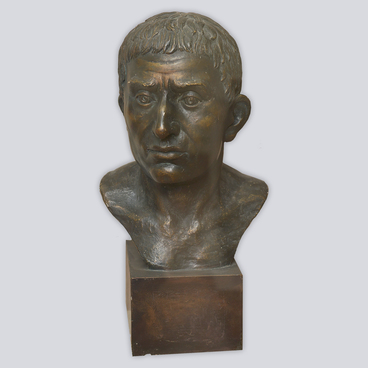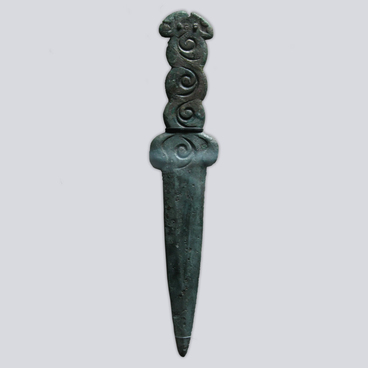Excavations held in 1960 - 1980 revealed hundreds of burial masks dating back to the early days of Volga-Kama Bulgaria. Tankeevka burial ground played a special role in the studies of funeral rites and rituals of the first millennium AD. Over 20 types of various face covers were found there including the burial mask that was presented to the museum by archaeologists Elena Khalikova and Evgeny Kazakov.
Burial Mask
Время создания
10th century
Размер
16,2x11,5 cm
Техника
Silver plate, silk
Выставка
#1
Burial Mask
#3
#4
According to the pagan beliefs of the peoples who lived in the Volga Region, spirits could return to the world of the living to watch people and even talk to them. To protect themselves from the guests from the other world but also to demonstrate respect for the dead and let them contact the living, the mourners covered the faces of the deceased with burial masks that had openings for the eyes and mouth.
#5
These funeral attributes were always given anthropomorphic features but they never had a portrait-like similarity with the deceased and were put into the burial ground to accompany the dead. This represents the difference between the Bulgarian masks and burial masks that were taken from the faces of the deceased to keep the memories.
Various fabrics, bronze or precious metals were used to create funerary masks that demonstrated the status of the deceased. Wealthy families could afford gilded masks while less well-to-do families used simple leather or fur masks.
#6
This mask is made of silver plates sewn on the Chinese silk lining. As silver was considered a sacred metal in ancient times, the deceased owner of the mask enjoyed a high social status.
#7
In addition to social standing, these items indicated the tribe a person belonged to. For example, Ob Ugrians wrapped their burial masks in skins with the fur inside rather than fabrics. They also used to sew buttons onto the masks.
#2
While studying the Tankeevka Burial Ground and other sites, archaeologists found out that some graves were set up differently though they were close to each other. This confirms that multiple cultures and religions existed side by side in the Volga-Kama Region. Archaeological findings also demonstrate that Bulgars led sedentary lives, exchanging goods with other nations that lived along the Silk Road, and also mastered thin iron processing technologies.
читать дальшескрыть
00:00
00:00
1x
Burial Mask
Время создания
10th century
Размер
16,2x11,5 cm
Техника
Silver plate, silk
Выставка
Открыть в приложении
Поделиться



